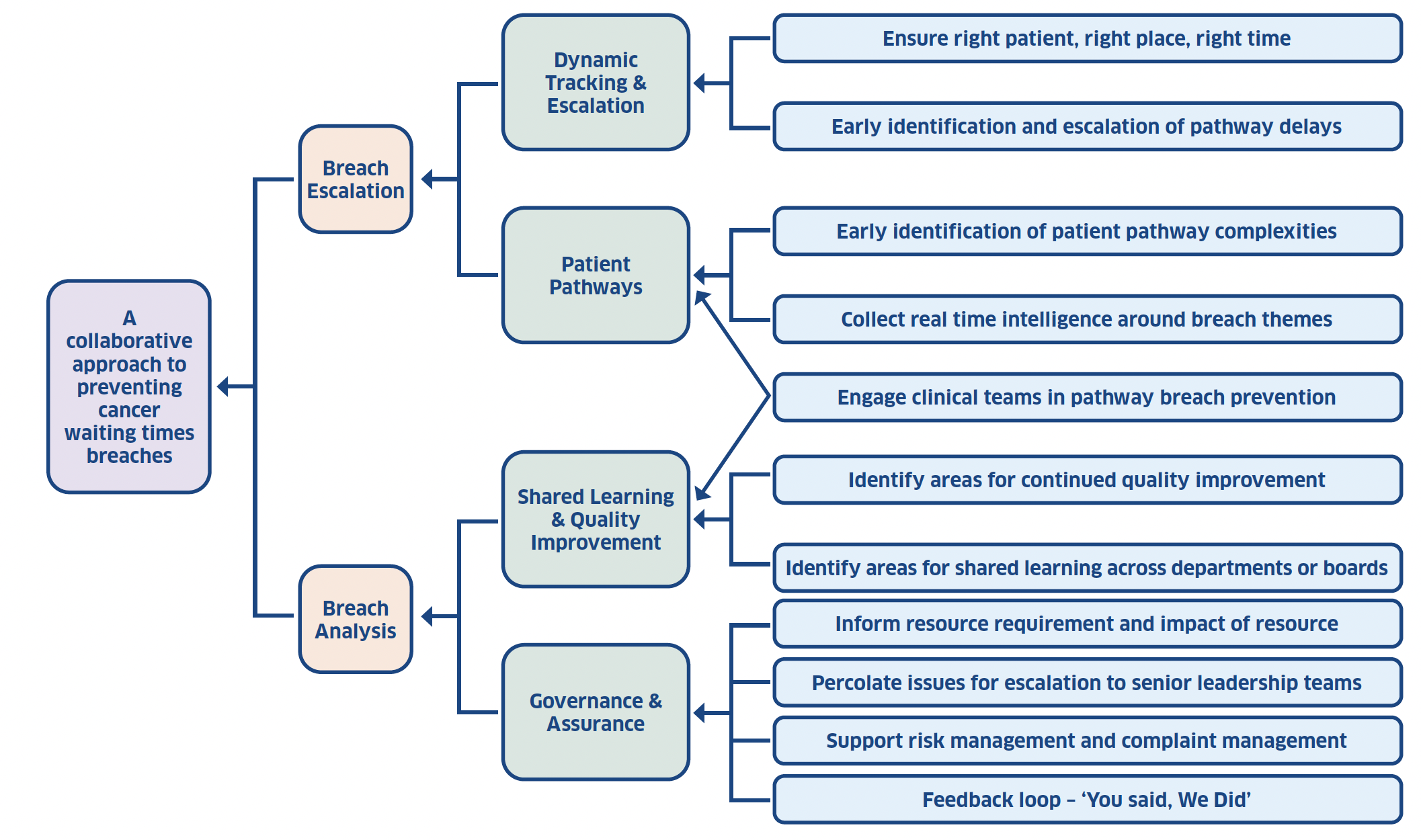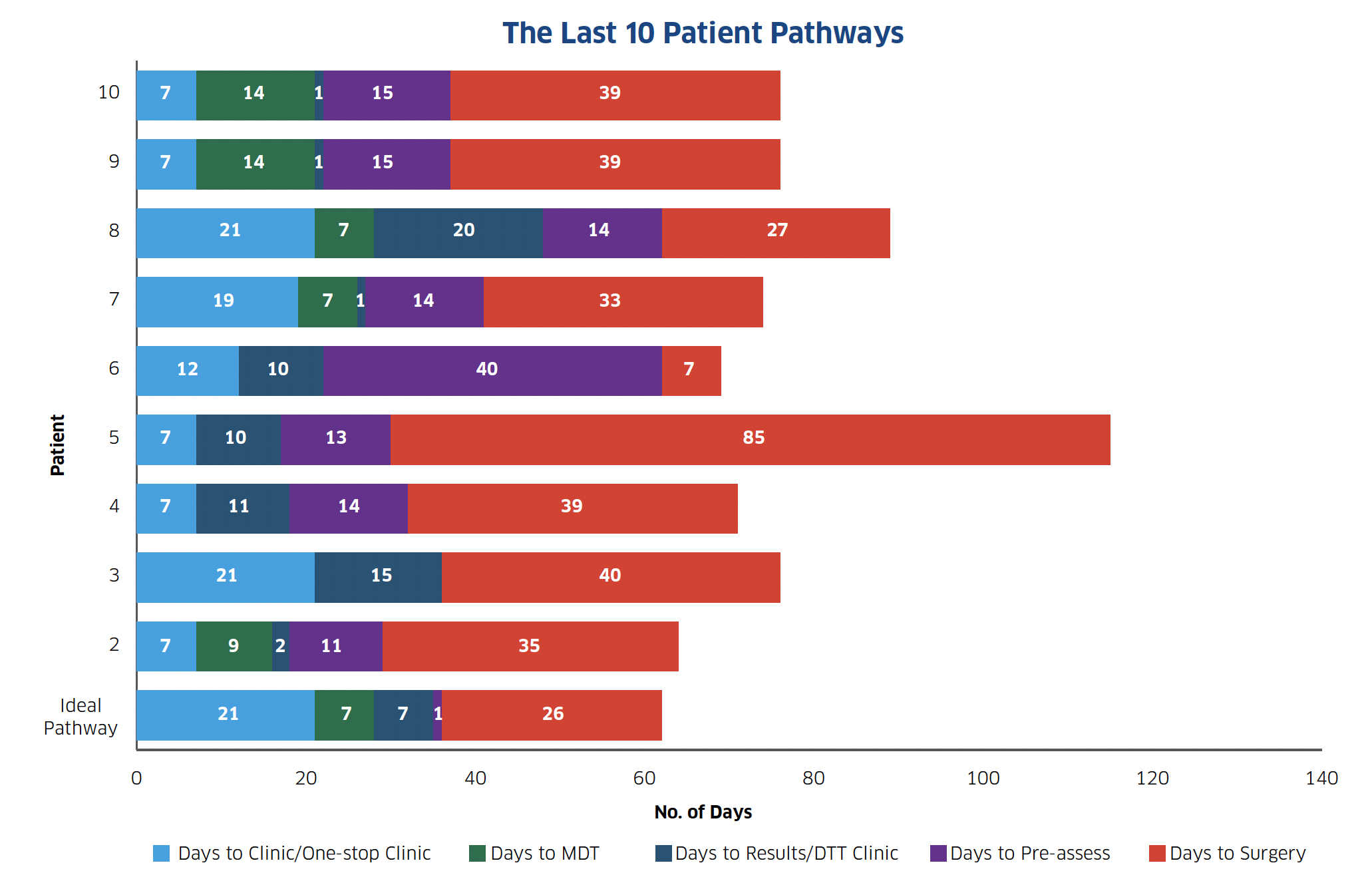Cancer waiting times - effective breach analysis 2023: standard operating procedure
Dynamic tracking of cancer pathways is core business in each NHS Health Board. Effective escalation is required to ensure all milestones of the cancer pathways are met. Where a breach occurs a detailed analysis is crucial to understand the challenges and to take action to avoid any future breach.
‘Once For Scotland’ Cancer Waiting Times Effective Breach Analysis 2023 Analysis 2023
1. Purpose
Prevention of avoidable breach of the 31-day & 62-day cancer waiting times standards through:
- Uniform approach to managing breach themes and actions for improvement;
- Validation when breach occurs locally, regionally and nationally;
- Effective governance through communication to service clinical and management teams of cancer waiting times standard breaches;
- Breach prevention by learning and pathway adaptation;
- Support actions within the Framework for Effective Cancer Management;
- Shared learning through the NHS Scotland Cancer Managers' Forum and Turas repository of good practice.
2. Process
Dynamic tracking should be core business to actively monitor the patient as they move through the agreed pathway, keeping within agreed milestones.
2.1 Breach Prevention Escalation
- As per the Framework for Effective Cancer Management (point 4.1), boards will follow local processes around dynamic tracking and escalation which should be agreed and detailed in the Cancer Management Standard Operating Procedure (SOP).
- Effective breach escalation will include:
- Daily cancer tracking and escalations to move patients along the agreed pathway;
- Weekly reporting and patient tracking lists PTL meetings to identify service pressures;
- Service pressures escalated to operational management teams;
- Where no resolution can be achieved escalation to senior management team and executive teams where required.
2.2 Breach Impact Analysis
Monthly
- Cancer waiting times performance is submitted to Public Health Scotland (PHS) on or around the 20th of each month, as per the Cancer Waiting Times Reporting Timetable.
- Services must review breach reasons prior to the submission.
- Cancer waiting times teams will be asked to carry out a patient breach analysis, in collaboration with clinicians, within one month following the submission. This will support breach validation and governance as well as provide an opportunity for shared learning.
- Individual Patient breach analysis must include:
- A visual patient timeline, showing points of challenge in comparison to the standard expected timeline;
- Clinical or social reasons, not already recorded, that have delayed this patient's pathway?
- Would this patient's pathway be considered clinically complex? (See Cancer Waiting Times Data & Definitions manual for definition)
- Could this breach have been avoided? (Yes / No)
- If Yes - What steps are being taken to avoid this breach in the future?
- Has the patient come to harm due to the breach?
- Has the intent of the treatment changed because of the delay (radical/palliative)? If yes, this will be recorded on Datix.
- Has the tumour upstaged (UICC stage) from presentation to treatment? If yes, this will be recorded on Datix.
NB* Breach analysis reports are for management information only and will be saved locally by cancer performance teams, there is no requirement to include these in patient records.
Quarterly
- Cancer waiting times performance is re-submitted and validated to Public Health Scotland (PHS) at the end of each quarter, as per the Cancer Waiting Times Reporting Timetable.
- Cancer waiting times teams must meet with service management and clinical leads on a quarterly basis. The purpose of this is to review breach themes within the tumour group pathway and identify any changes from previous time periods.
- Visual reports will be provided demonstrating points of challenge in comparison to the standard expected timeline. (see appendix with example).
- An action plan for service and quality improvement will be agreed, shared with the relevant service providers, and monitored through appropriate governance structures.
- Breach analysis summary reports and action plans must be shared internally for assurance with boards performance review groups, clinical governance, senior leadership and executive teams.
- It is expected that boards will develop a communication strategy to feedback challenges and improvements.
'Once for Scotland' - CWT Effective Breach Analysis SOP Working together to improve the patients' journey and experience

EBA SOP - Appendix 1 (visual breach analysis)

Contact
Email: Margaret.kelly@gov.scot
There is a problem
Thanks for your feedback